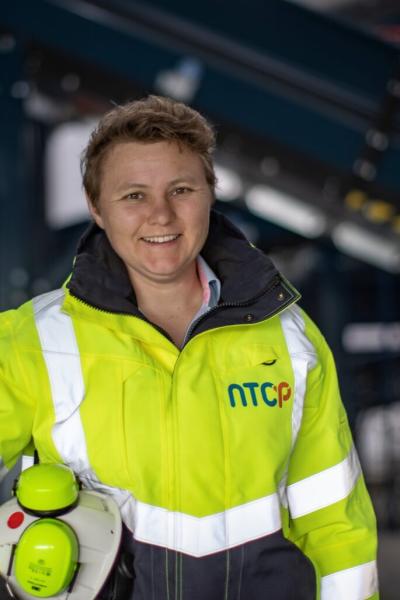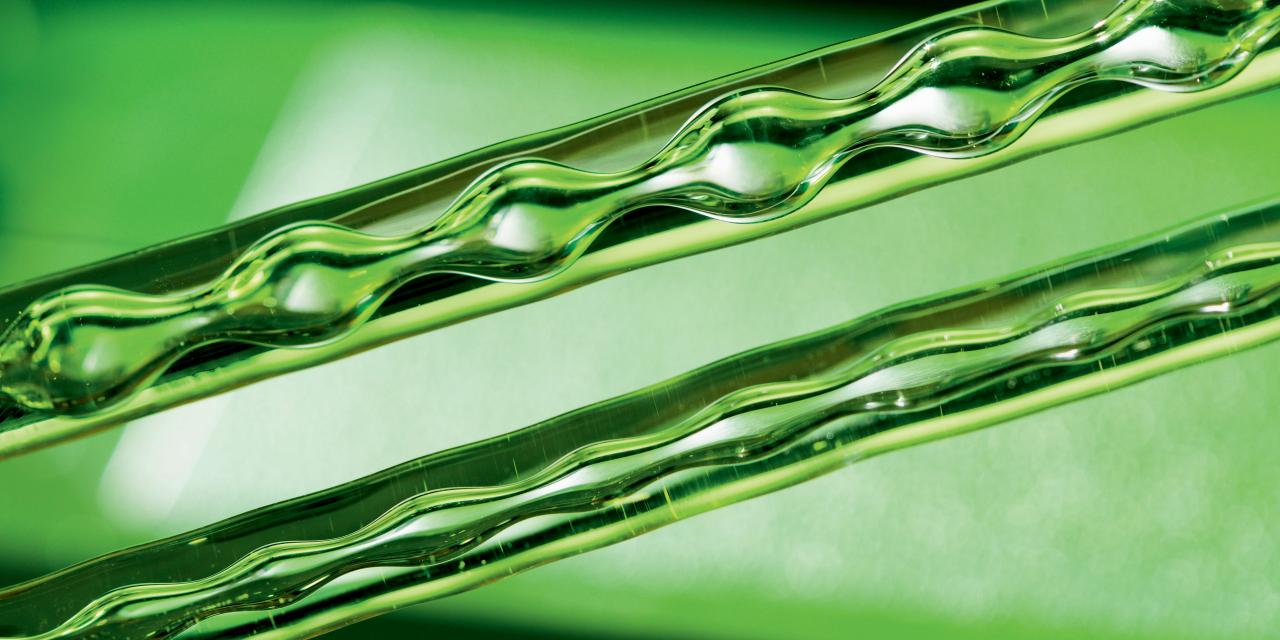The National Test Centre Circular Plastics has state-of-the-art technology and facilities for sorting and separating plastic waste streams. With testing and research on an industrial scale, it contributes to closing the plastic loop for packaging materials. But what is most important, says NTCP director Martine Brandsma, is to develop an integral approach in view of circularity. “Optimal recycling really doesn’t mean that all recyclate has to be similar to virgin plastic.”
“We live in a country where waste management used to be focused on disposing the waste in a responsible and controlled way,” says Brandsma. “In itself that works quite well. But if we want to put circularity first, we need a different approach from a perspective of recovering potential resources instead of disposing waste. We have to look at the entire value chain, from raw material production to design, disposal and reuse”.
 NTCP director Martine Brandsma – NTCP picture by Henry Dullink
NTCP director Martine Brandsma – NTCP picture by Henry Dullink
That’s a rather surprising message coming from a centre of expertise in sorting and washing. After all, this represents just a single step in the cycle. How does the NCTP fulfil its role across the entire value chain?
“On the one hand, we indeed serve the companies that sort and separate plastics. At our centre, we have the same equipment but we have modified this to properly monitor, adjust and test the complete processes. Furthermore, we test on an industrial scale and carry out analyses on actual, genuine waste streams and we are investigating new, innovative technology. Another sensor, a robotic arm, a completely new instrument: we examine if it works and how it contributes to the business case. We conduct research for companies in the industry while their own installations can keep on operating.”
“The other side of the story is that as an independent test centre we can serve every stakeholder along the chain. This is the first independent test and development organisation in Europe in the field of plastics separation. We’ve only just started, but everyone already knows where to find us. We work together in research projects with companies such as DOW and Shell, but also Albert Heijn, Unilever, Friesland Campina, you name it.”
What exactly do these parties want from NTCP?
“We provide insight into the way that the packaging materials of their products behave in the process of separation and sorting. From there on we work together from an integral perspective: how do you design a packaging, what purpose do you have in mind, which materials do you use, how are you going to recycle them and what are you going to do with the recyclate? That’s all equally important and that’s precisely why we focus on all stakeholders in the entire chain: plastic producers, packaging producers, brand owners, retailers, waste collectors, sorters and recyclers.”
“In fact, this is also the perspective of our participation in the Circular Plastics Initiative (CPI). As NTCP, we are responsible for the CPI work package on sorting and washing, but together with all participants we are considering the complete chain of plastic recycling”.
What are, in your view, the prospects? Will there ever be a sorting and washing process that allows for 100% recycling of plastics?
“Technically that could indeed be possible. If we take the time to identify each piece of plastic we can already get a great result, even though this yields types of packaging plastic that are very difficult to reuse. But we have to keep things practical. The reality is that in the current sorting process pieces of plastic are positioned on a belt that operates at a speed of three meters per second, sometimes with the pieces on top of each other, and that the separating air pulse might at times not be properly directed. There is always a balance between the speed at which you want to separate, the result you want to achieve and what you are prepared to pay.”
“Nevertheless, I think that with the current technology we can make a big step towards the 100%, through better co-ordination and optimisation along the chain. In my view, it is key that the suitability to be sorted and reused is already taken into account in the design of packaging and the choice of materials. Already in the design phase plastics should be selected which are easy to recycle. That is exactly what we are talking about with the parties I mentioned earlier. For example, from a recycling perspective it is better to avoid multi-layer (or multi-material) packaging. Mono packaging is easier to process, which considerably improves the suitability to recycle.”
There’s a lot of complaining that recyclate quality does not allow high-quality reuse. What could be done to improve this?
“Of course we can improve the quality of recyclate by striving for cleaner waste streams, improve washing and optimize processing. But I think it is important to realize that we don’t always have to work towards recyclate that has the quality of new plastic, of virgin material. Recyclate does not have to have the best specifications, it has to have the right specifications. That’s the idea of application driven recycling: obtaining recyclate with the quality that suits the foreseen application. This determines the way of recycling, it determines how clean the waste stream should be and ultimately that determines the sorting requirements. So you have to reason it all back, right down to the first design. All this will allow us to increase the total volume of recycled plastic”.
“I think of an example where the quality of recyclate was found not up to standards because of a somewhat strange smell. There was discussion on how to avoid that. But if the recyclate is used to package a highly perfumed product such as detergent or shampoo, it is in fact a non-issue. If we all accept that not all packaging material is made of similarly shiny, brightly coloured plastic, then there will be many more opportunities for using recyclate. I am quite charmed by the example of a Danish manufacturer of PET trays. He simply uses the recyclate that is available at any given time. One week the trays are pale green, the other week they are pale pink or pale blue. They then ship to England to a lasagna producer, and its consumers say: look, cool, recycled plastic!”
This is the second interview in a series of interviews with parties throughout the plastic value chain, participating in the Circular Plastics Initiative. In the first interview Anton van Beek of DOW Benelux talks about the role of chemical recycling in the war on plastic waste.
